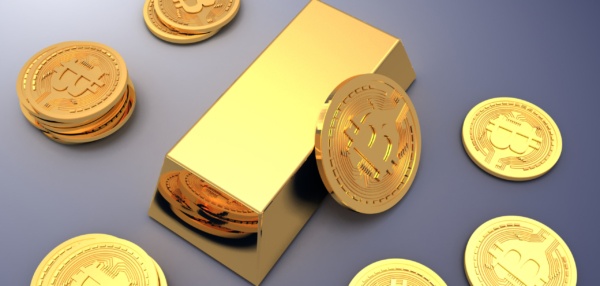Bitcoin is the oldest, most popular, and largest cryptocurrency in terms of market value. The digital asset has recorded a remarkable growth in value since its inception about a decade ago. 2021, in particular, was an extraordinary year for Bitcoin, having hit the record high three times in terms of value. Often, similarities have been drawn between Bitcoin and gold, some going as far as calling it the “digital gold”. On the surface, the two assets have many things in common.
As we recently read in business insider: Bitcoin’s float-adjusted market capitalization is currently a little over $700 billion, while the public owns about $2.6 trillion of gold for the purpose of investing, an analyst wrote in a note Tuesday. This means bitcoin commands roughly a 20% share of the “store of value” market, which includes gold.
Similarities between Bitcoin and Gold
Store of value
Bitcoin and gold are both stores of value existing outside traditional government and monetary systems. As such, they both act as a hedge against inflation. The rarity, beauty, usefulness in jewelry, and industrial applications of gold make gold maintain its value over a longer time. On the other hand, Bitcoin does not have any intrinsic value, nor is its value determined by cash and dividends as is common with stocks. The price of the digital asset is determined by the dynamics of demand and supply driven by the buyers and sellers. Scarcity is a key factor in driving the bitcoin value. Bitcoin has a hard cap of 21 million tokens – the maximum amount of bitcoin that will be in existence once the last bitcoin is mined in about 118 years from now.
The demand for alternatives to fiat currencies as a store of value surged during the pandemic as many governments increased their debt and money supply. Many investors and companies turned to Bitcoin and gold to protect the value of their assets. Bitcoin price increased about fivefold during the pandemic.
Durability
Both Bitcoin and gold are much durable. Bitcoin is supported by the blockchain network, which is immutable. The records contained in the Blockchain network are immutable, hence giving bitcoin high durability. The only way to destroy bitcoin is by losing the internet, which is very unlikely. On the other hand, gold may wear away slightly, especially, if not handled carefully. Nonetheless, it has proved the test of time.
Transferability
The transferability of gold played a significant role in its rise. Transfering bulky products to complete a trade during the butter trade era was difficult. Therefore, many people embraced gold as a medium of exchange. Like the gold of antiquity, bitcoin answers to the need for faster transfer of assets in this generation. You can send bitcoin from one address to another in a matter of seconds.
Divisibility
The use of gold outfaced the butter trade as the main type of trade during the early ages due to its divisibility. People could divide gold into small units to meet match the required value. On the other hand, Bitcoin is also divisible. The smallest unit of bitcoin is called Satoshi, and 100,000,000 satoshis make up 1 BTC.
Fungibility
Gold is a fungible asset. You can swap one piece of gold for another without losing its value. Bitcoin is also very fungible since one can substitute one bitcoin with another while maintaining the value. Fungibility gives bitcoin the liquidity necessary for easy adoption as both stores of value and medium of exchange.
Verdict
Bitcoin has most of the features that facilitate the rise of gold as both stores of value and medium of exchange in the earlier ages. Durability, transferability, divisibility, fungibility, as well as being a store of value make Bitcoin the digital gold. The asset has already seen a dramatic rise in value in the past few years it has been in existence.
Zach Pandl, Goldman’s co-head of global FX and EM strategy wrote that “Hypothetically, if bitcoin’s share of the ‘store of value’ market were to rise to 50% over the next five years (with no growth in overall demand for stores of value) its price would increase to just over $100,000, for a compound annualized return of 17-18% (accounting for growth in bitcoin supply over time),”
The asset crossed an all-time high of over $69,000 in November 2021. What the future hold for Bitcoin is not currently very clear. However, judging from the trends in the previous history, the future may be bright for this relatively novel digital asset.

